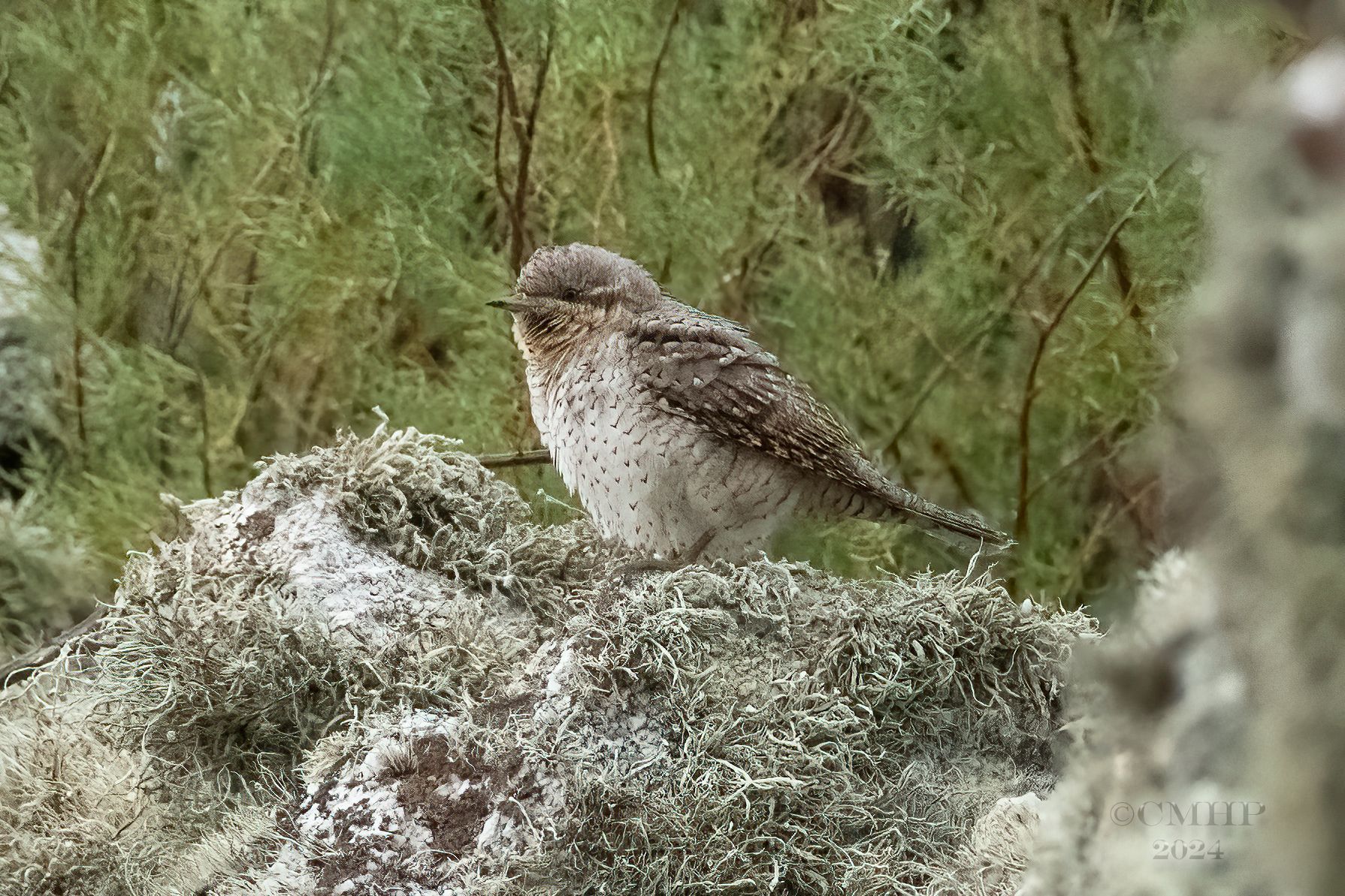Wryneck
Is it a bird?

Our first afternoon on the Isles of Scilly was drawing to a close as we passed through the gate at the top of Peninis Hill on St. Mary. Word had arrived that a wryneck had been spending time near the group of tamarisk which stood in the crook of a stone wall. As we made our way down the path, Carl Chapman (our specialist guide) paused occasionally to scan the area with his field glasses. “This is probably the most reptilian bird you will ever see,” he commented. Further down the path on the other side of the tamarisk stood two other people with their field glasses trained towards the wall and the path beneath. Don and I followed Carl towards them until, just as we drew level with the shrubs, he pointed to a small greyish brown bird huddled along the grass edge focused on its dinner. As it raised its head, I could see through my binoculars exactly what Carl had meant. The feather pattern along the head and neck, in beige and brown and grey, performed a trick of the eye. The shape of the head and illusion of scales transformed the creature. What my eye saw was a mythical beast; half bird, half lizard. It was difficult from our angle to get a clear view, even with gentle manoeuvring, as the bird worked its way through the long grass. This was a wryneck (Jynx torquilla), a member of the woodpecker family. Its name derives from its ability to rotate its head around much like an owl. Unlike the spotted woodpeckers, it doesn’t cling to vertical services hammering away for what insects and grubs it can find. Its bill is too delicate so, like its cousin the green woodpecker, it is a ground feeder subsisting largely on ants. Its long tongue is perfect for delving into anthills to scoop out larvae.
After a short while, our specimen left the path and flew to a spot on the wall, settling onto the lichen-cloaked rocks to look out over the hillside and to the Atlantic beyond. It fluffed out its feathers to warm itself and the illusion of the lizard vanished. But the transformation gave a much clearer view of the individual patterning of the feathers themselves. A mottled blend of grey and brown along their backs and wings, they carry a dark stripe from the back of the head down the neck. They have a barred neck in shades of cream and brown which lightens as it descends to a chevron mark in chestnut brown on each of its creamy breast feathers.
Wrynecks used to be a breeding bird in the UK, but breeding pairs declined over the course of the 19th century on our British Islands. No breeding pairs existed in the England or Wales by the end of the 20th century, though there is the occasional attempt by pairs in Scotland. This lack of local reproduction has categorised the species under the Birds of Conservation Concern 5: the Red List for Birds (2021) as a former breeding species and they are protected in the UK as a Schedule 1 species under the Wildlife and Countryside Act 1981. However, the International Union for Conservation of Nature (ICUN) Red Listing categorises them as Least Concern both globally and in Europe. They are largely found in the summer months in the more northerly regions of Europe and Asia where they use prefabricated nesting sights made by other birds and mammals, their beak being too delicate to hammer out their own. As the seasons shift, they pass through the UK on their way to Africa where they will overwinter. Sightings are more prevalent in autumn along the eastern and southern coasts of the UK.
After several minutes, our visitor lifted off and flew down the hillside to disappear from view in the rough covering. It would be our only sighting on this trip, but it was a memorable one.
